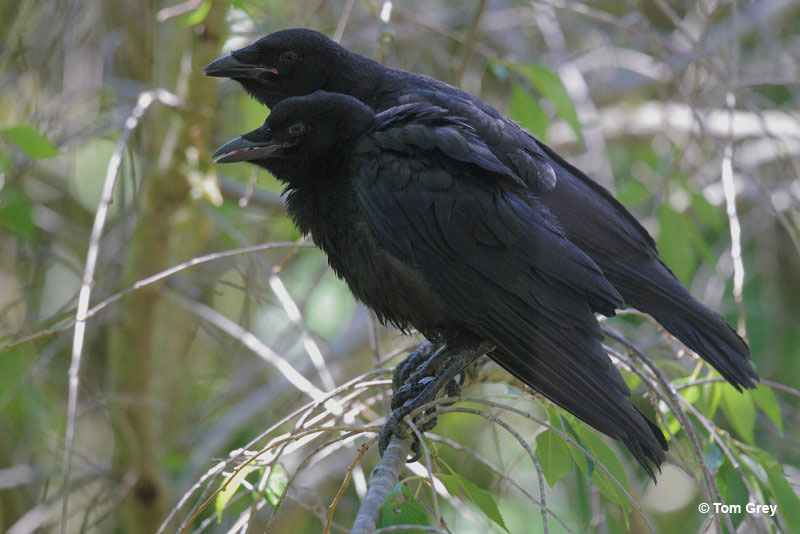
Crows are common birds all across the United States and in many other parts of the world. These intelligent medium-sized all-black bulky birds can be seen flying around in pairs or groups.
When they fly, they make rowing motions with their wings and their harsh and loud call can sound ominous.
So what do crows symbolize? Crows symbolize various and contrasting things as they are a part of many different cultures, religions, and belief systems and are often associated with death and bad omens, but that’s not always the case.
On this page
What Does It Mean When You See a Crow?
If you happen to live near places where crows nest and forage, you are very likely to cross paths with them. In this case, seeing them indicates that these are favorable conditions for the birds and that they are used to their surroundings.
However, if the encounter is unexpected, you’re open to further interpretations. If your instincts tell you it was something more, then you should take some time to think about what this meeting might mean.
Context and the combination of various aspects are important in determining the meaning behind it. It depends on whether you saw it in real life or a dream, what color it was, the number of individuals, and in what culture and belief system you’re a part of.
Crow Meaning & Symbolism
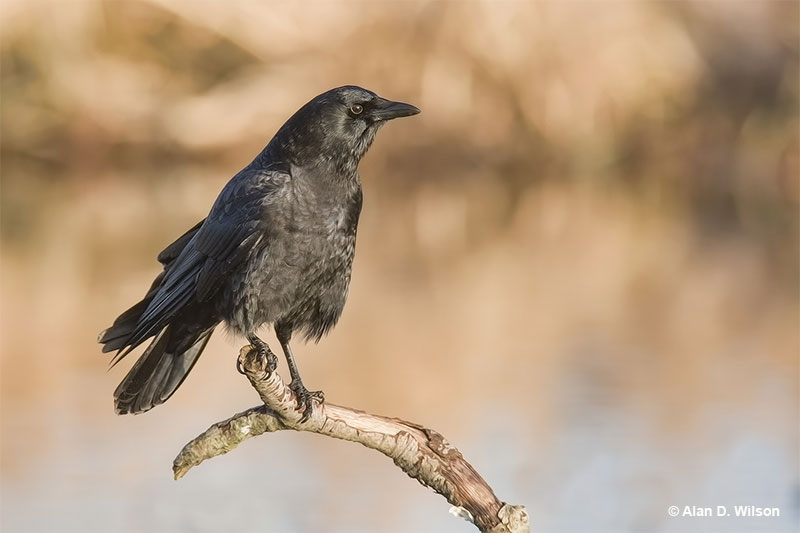
© Alan D. Wilson
So what do crows represent? The symbolism of Crows has been different across ages, cultures, and religions. They have been seen in both good and bad light.
Crows have been long viewed as bad omens, symbols of death, and a messenger between the spiritual and our world. Mostly because they feast on dead animals and due to their connection to the underworld in different mythologies.
Intelligent Birds With Bad and Good Omens
Crows are known to be very intelligent and gifted problem solvers and as such symbolize wisdom, intelligence, and adaptability in modern western culture. They usually pair bond for life and are highly monogamous, family-oriented birds, therefore symbolizing loyalty.
Related: The symbolism of black feathers
Seeing crows can have many different meanings. If you keep seeing crows, especially unexpectedly, then it means that change is coming. You need to do some self-reflection, you’re attuned to your surroundings, or someone is trying to communicate with you.
If you have a conflict or a dilemma and you keep seeing them, you should take some time to self-reflect and look at the situation fairly and take accountability for your actions.
Dead Crow – Start of a New Phase
Seeing a dead crow is believed to indicate that you are nearing the end of something and moving into another phase in your life. Perhaps in your job, relationship, or something else entirely.
If you happen upon crows scavenging on a dead animal, it may suggest misfortune, indicating that the current way of life is coming to an end.
However, death and rebirth are a part of the natural cycle. So, instead of being sad that something is coming to an end, you can view it as the beginning of something new and exciting.
Crows cawing encourages you to stay strong and continue your path. On the other hand, this can also be considered a sign of warning or impending danger, especially if the encounter was unexpected.
Following Crow – Follow Your Intuition
If you notice a crow following or staring at you, or if you see one flying across your path, it may encourage you to follow your intuition and lean on your own experiences and wisdom, even if the others around you don’t agree with the path you’re taking.
Additionally, it might mean that someone is watching over you or that change is on its way.
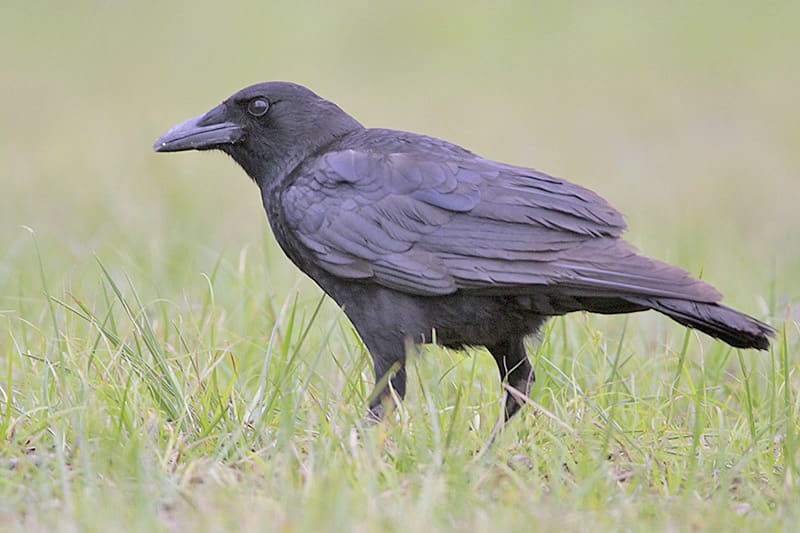
Photograph © Greg Lavaty
Attacking Crow – Misfortune and Great Challenges
If a crow tries to attack you, it might be a sign of misfortune and great challenges. These hardships can ultimately lead to growth and change. When one of them lands on your car, it’s time to take a pause and reassess the direction your life is going in.
Coming back to a bit more earthly explanations. If you see a large number of them circling a specific area, then they’re expecting to get fresh meat. This usually means they are expecting a human or an animal to die there soon.
Number of Crows
Seeing one or many crows can have different meanings, depending on where and how you saw them. In general, they indicate transformation and change. However, if there is a large number of them, less fortunate news might be on their way.
Coming across a single crow can indicate new opportunities and good fortune but may also mean that it’s a deceased loved one trying to comfort you.
Sometimes you might find crows gathering around your house. A single crow indicates bad luck and possible destruction,
- a pair of crows means harmony and good news,
- three crows bring good health,
- four of them bring fortune and affluence
- five signal illness or poor health taking over the household
- six warn of potential robbery
- seven indicate that you should travel or move in the near future
- eight predict grief and sorrow
- whole flock of them means that death is approaching.
Crow Spiritual Meaning
But what about the spiritual meaning of crows? They are known as interpreters between realms and messengers of gods, and as such, have an abundance of spiritual meanings. They can be a sign to do some self-reflection on yourself and your values. Additionally, crows are believed to relay messages between the living and the spiritual realm.
Crows represent change, death, rebirth, and much more depending on the context, the number of birds you see, your religion and the color of the bird.
Native Americans considered crows to be power animals, totem animals, and spirit guides. These birds were respected because they “cleaned” the bodies of dead animals and because they were highly intelligent, earning themselves the nickname “tricksters”.
They were often chosen as spirit guides, and totem and power animals, also signifying good luck.
In Norse and Greek mythology, they were a symbol of a god, Odin and Apollo respectively. Spotting them could mean different things depending on the number of them, their color, and the direction of their flight.
Seeing a Crow In Your Dreams
Seeing a crow in your dreams might mean your sub-conscience is trying to send you a message.
If you dream of a crow, it is time to do some self-reflection and figure out the message it was trying to convey by looking at how many of them you saw, what they were doing, and what color they were.
Seeing one crow is regarded as a bad omen, indicating that death or misfortune is coming. If you see multiple crows, it means it’s time to expand your horizons and learn new things.
In situation
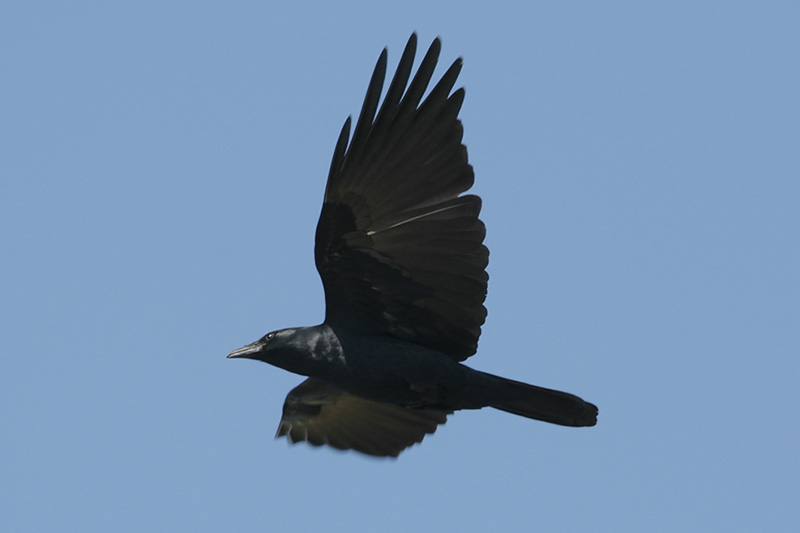
Fish Crow. Photograph © Greg Lavaty.
Secondly, try to remember what the crow in your dreams was doing.
- If you dream of a crow flying, it can be your sub-conscience telling you to face your fears and deal with your hidden issues. Only then can you move forward and reach the goal you want.
- If the bird is eating, it shows that your current course of action is good and is going to bring success.
- If a crow is chasing you, it means you need to stop making bad decisions and running from the consequences. Face your problem and wrongdoings so you can be at peace.
- A crow sitting on your arm or shoulder signifies that you’ve gained enough experience and wisdom to overcome your obstacles and accomplish what you desire.
- A crow on fire or emerging from fire symbolizes rebirth or spiritual awakening. You, your interests, and your passions will change drastically.
- If you see one nipping you, it might mean you are angry at someone, and the crow is reminding you that you’re strong enough to deal with your emotions and the situation.
- Catching a crow, however, might be a bad omen. It may indicate an unexpected and unfortunate death in the near future.
Color
If it’s relevant to your belief, a crow appearing in any color other than black can be a sign that it is a messenger from a specific spirit or god. If you’re not religious, then their Color might refer to other things.
- Black crows represent transformation and going out of your comfort zone to achieve it.
- Seeing a white crow indicates that your future will reflect your actions, both good and bad, representing justice.
- A gray crow reminds you of your shortcomings, how far you’ve come, and the path that’s yet to be braved.
- A red crow indicates nearing conflict. You might have to stand up for yourself and what you believe in.
Crow As the Symbol of Death
Crows and their symbolism are closely associated with death. They are opportunistic scavengers and as such often appear next to dead animals and bodies, on battlefields, and in cemeteries, which is probably one of the reasons for the bad reputation they get.
It doesn’t help that different beliefs and mythologies closely relate these birds to the underworld. Plus, their all-black appearance and harsh ominous call can be a bit intimidating.
In crime shows and horror movies, they’re often used to indicate that something bad is going to happen or has already happened. All of this is probably the reason that a flock of crows is called “murder”.
Intelligence
Crows are highly intelligent and have shown remarkable problem-solving skills. The number of neurons in a crow’s brain is about the same as in some species of monkeys, but since the brain is smaller, the communication between them seems better because they are closer together.
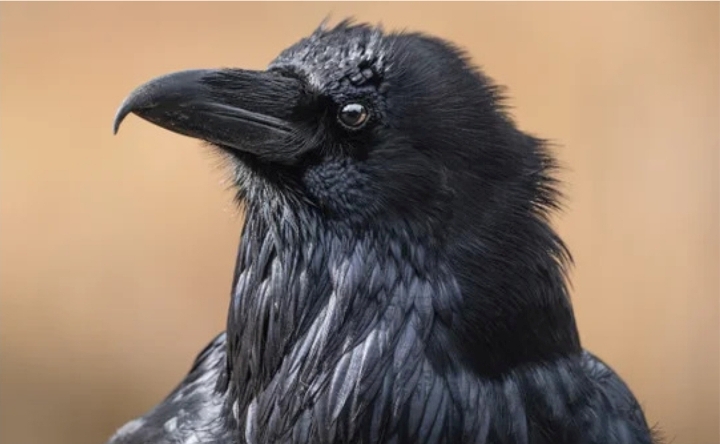
Scientists have concluded that their level of intelligence and problem-solving is at about the same level as a seven-year-old child’s.
Crows have demonstrated a high level of intelligence by making and using tools, solving problems, having strong, long-lasting memories, having the ability to recognize human faces, and using non-verbal communication.
One of the stories talking about a crow’s intelligence includes a crow tossing stones into a water pitcher to raise the water level so the bird could reach it and have a drink.
Related: How to attract crows?
Crows also symbolize teamwork and adaptability. They are loyal and collaborate with other members of the group to raise their young and drive away other birds and predators. Most notoriously, they work together to determine how one of their own was killed.
Crow Tattoo Meaning
Most often, in line with a crow’s overall symbolism, a tattoo of a crow symbolizes death or transformation. Usually chosen by someone strong-willed. Sometimes people choose the tattoo as they feel this bird is their spirit guide, representing wisdom, mystery, and adaptability.
Flowers, typically roses, are paired with the crow to represent the gentler side of the bird, referring to its loyalty. Some renditions that include weapons can be used to represent overcoming trauma or tragedy and being a warrior.
Read more: Bird Tattoo Meanings & Ideas
A flying crow represents power and authority. If someone wants to depict the crow in a darker, more evil way, then they incorporate imagery that represents witchcraft and the occult, such as the moon, or the crow having a third eye.
In the end, it is up to the person to choose the meaning behind their tattoo.
Frequently Asked Questions
Is a crow a good omen?
Depending on the context, a crow can be both a bad or a good omen. Most of the time they indicate change, rebirth, wisdom, and self-reflection, but also death and misfortune.
Why is crow a symbol of death?
Crow is a symbol of death because they’ve circled battlefields, lived in cemeteries, and fed on dead animals and human corpses. Additionally, their all-black appearance and harsh call can be intimidating and ominous. Not to mention the fact that in many religions and cultures, they’re related to the underworld.
Do crows warn of danger?
Crows usually don’t warn humans specifically, but some of their behavior can indicate a possible danger nearby. Crows post sentries, who survey the surroundings and give others a loud distinctive call when something dangerous, e.g., a predator or even a person with a gun, is in sight.
What is the meaning of a crow feather?
Depending on your culture and beliefs, a crow’s feather can represent dark magic, death, a message from the dead, dangerous journeys, and the unknown, or in contrast, good luck and prosperity. It is also
a sign of protection, transformation, and growth.
Conclusions
All in all, crows represent death, danger, misfortune, and illness but also rebirth, self-reflection, intelligence, and loyalty, and as such can be both good and bad omens, depending on the culture and beliefs.
They have carved their place into mythology, literature, and popular culture. A tattoo of a crow is a popular choice for strong-willed people, often representing transformation, and loyalty, but also darkness and death.
In the end, the meaning of these birds depends on the context of the encounters and how you choose to interpret them.

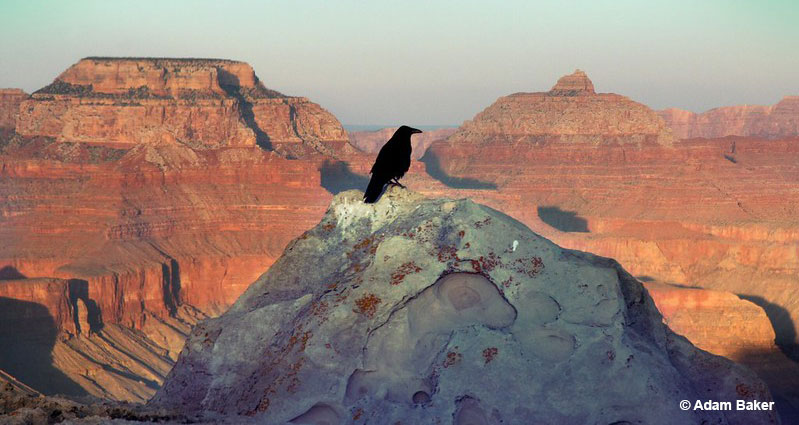
Prakash
Monday 8th of April 2024
A live Pair of crows was found inside the room what is the symptom?
Patrick O'Donnell
Tuesday 9th of April 2024
@Prakash- In all likelihood, it means that the crows thought there was food in the room and found their way in. However, you could also take it to be a warning to be careful with the decisions you make, especially ones related to your home.
Sheila
Sunday 7th of January 2024
I have loved the Raven for a very long time his beauty I have collected pictures of them .
Cheryl
Monday 1st of January 2024
I was walking my dog yesterday (12/31/2023) when I saw 25 crows. I’ve seen as many as 5 or 6 around the condo complex I live in, but never 25. They were calling and making a lot of noise which caught my attention. They were flying to a stand of trees, so started counting, they all flew in the same direction. Any thoughts?
Patrick O'Donnell
Thursday 4th of January 2024
@Cheryl- What a cool sighting! Since crows are such smart and complicated birds, it can be tough to figure out what they up to. However, they often gather to go to a food source or harass a predator. Since so many were making noise and congregating at a stand of trees, I can't help but wonder if they had found a roosting owl.
Julio Sena
Friday 22nd of December 2023
Few dozen crows trees near home
Patrick O'Donnell
Tuesday 26th of December 2023
@Julio- Nice to have those birds nearby. It doesn't necessarily mean they are a bad omen.
Jammie
Sunday 12th of November 2023
I had an incounter with 3 crows when I had my heart attack. I died 2 times but came back, and stood away from my body and watched the doctors working on me. I came back to life.